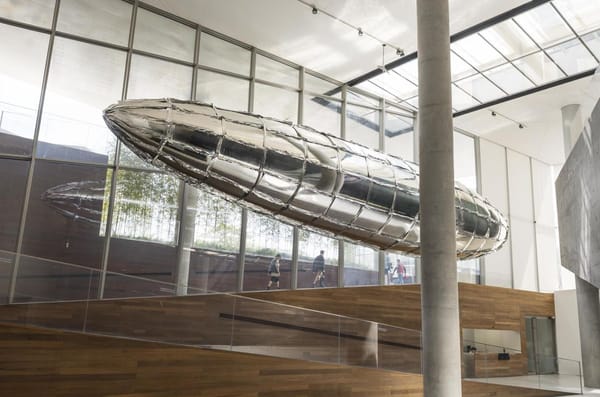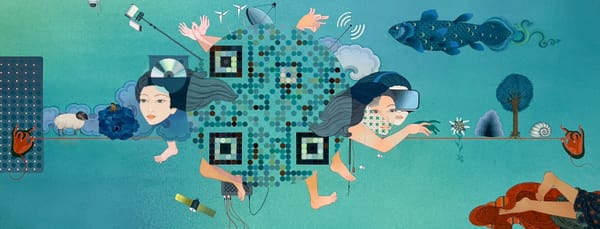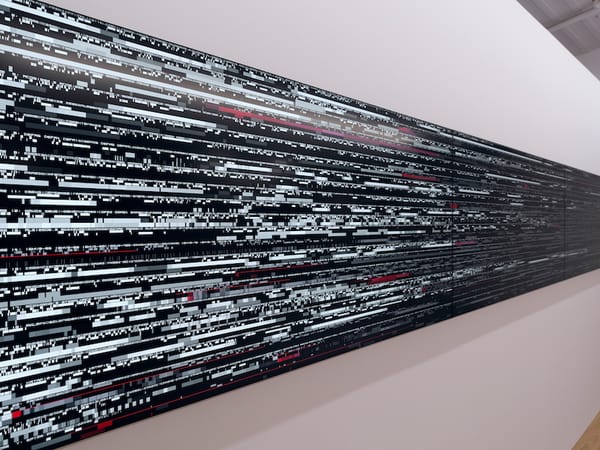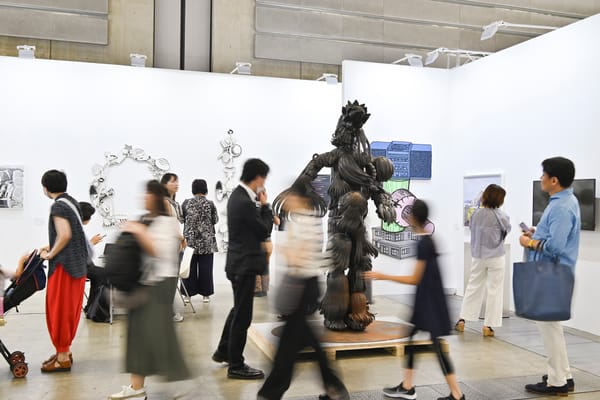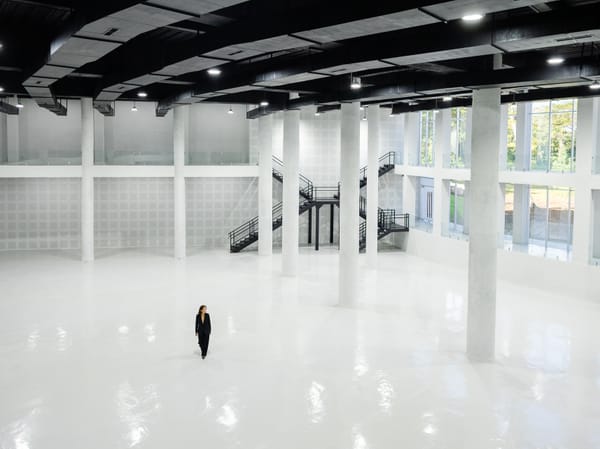Market
The Melting Pot: Art Basel Hong Kong

Despite imminent tropical rainstorms, Art Basel in Hong Kong opened to the assembled VIPs and press on Wednesday, May 14, without a glitch. During the press conference at the Hong Kong Convention and Exhibition Centre in Wan Chai, fair directors Magnus Renfrew and Marc Spiegler remarked that the level of presentation had been substantially raised, with an improved range of exhibitors from both Eastern and Western quarters, alluding to the fact that the vestiges of ArtHK (Art Basel in Hong Kong’s predecessor) have finally been smoothed away.
Whereas some worried that, with the Swiss takeover of the fair, local and regional flavors might be eclipsed by their international counterparts, a walk around the fair suggested that most galleries were making a concerted effort to focus their attentions on artists emanating from the region. Indeed, the spotlight seemed more focused on Asian artists than their Western counterparts, which may reflect a broader worldwide trend.

In the Encounters section, curated by Yuko Hasegawa, Chinese artist Sun Xun invited art-fair guests to visit the fictional Republic of Jing Bang (2014), which he describes as a “metaphysical state.” Attractively draped with hand-painted banners and flags, a visa can be purchased for just USD 30 while acquiring citizenship requires one to shell out USD 10,000. On the third day of the fair, five visas were reportedly stolen. Perhaps a case of bureaucratic negligence?
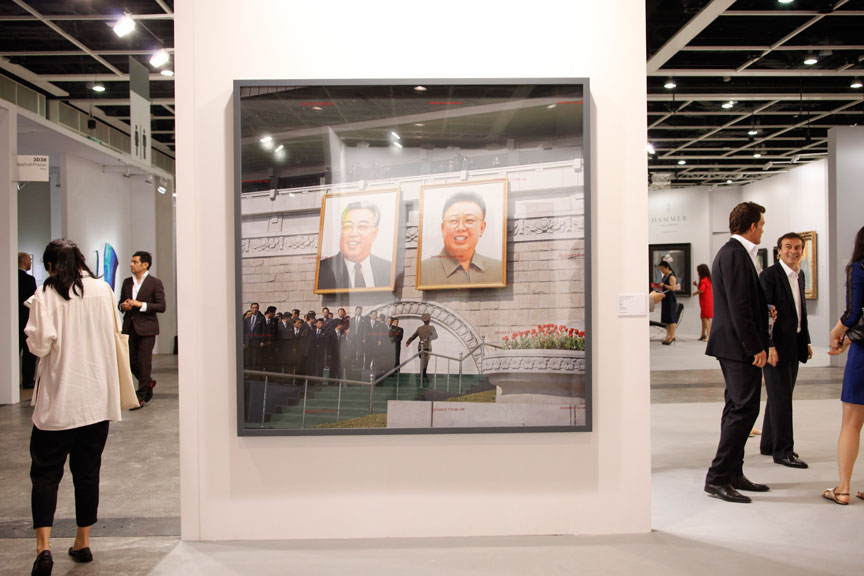
The idiosyncrasies of nations were also commented on in Wang Guofeng’s GMP+9 Timezone No. 1 (2012) at Hong Kong’s de Sarthe Gallery. Wang had been invited by the North Korean government to document an official ceremony, but was later requested to block out the faces of individuals who had since been executed.

Also in Encounters, Korean artist Yeesookyung’s ceramic shards rejoined with golden epoxy were gathered together in Thousand (2014), appearing like mutating cells in a petri dish.

Gu Wenda’s weavings of human hair seemed ubiquitous (this hanging was on view at Hanart TZ’s booth), even if their meaning remained rather less conspicuous.
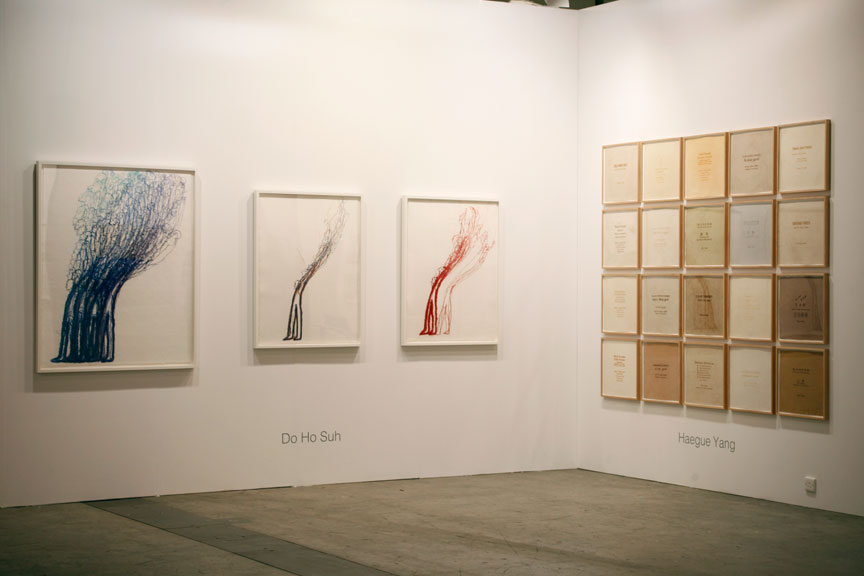
Other organic materials were employed over at Singapore Tyler Print Institute in Haegue Yang’s spice portraits and Do-Ho Suh’s thread prints, the latter created through an intricate process involving embroidering paper made from a dissolvable material and then pressing the remaining thread patterns into fresh pulp.
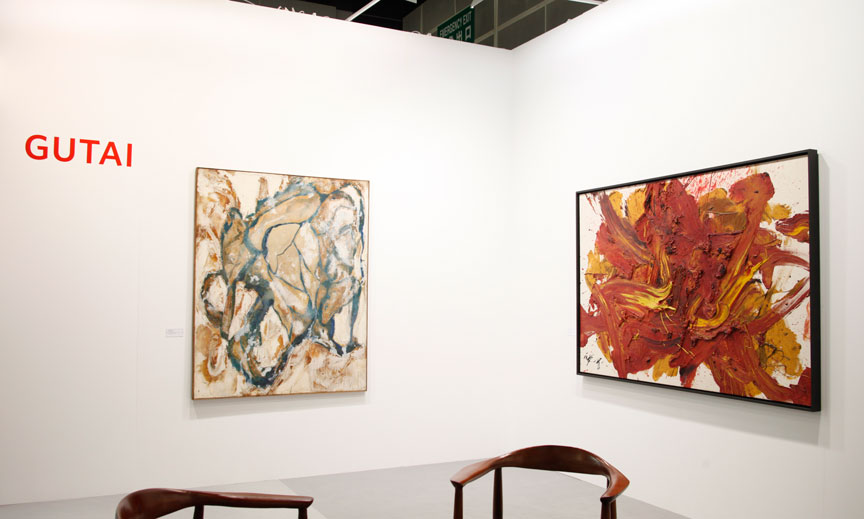
Fergus McCaffrey from New York showed a selection of paintings from the Japanese Gutai movement, including one canvas each from husband and wife Kazuo and Fujiko Shiraga, the former famous for painting with his feet.
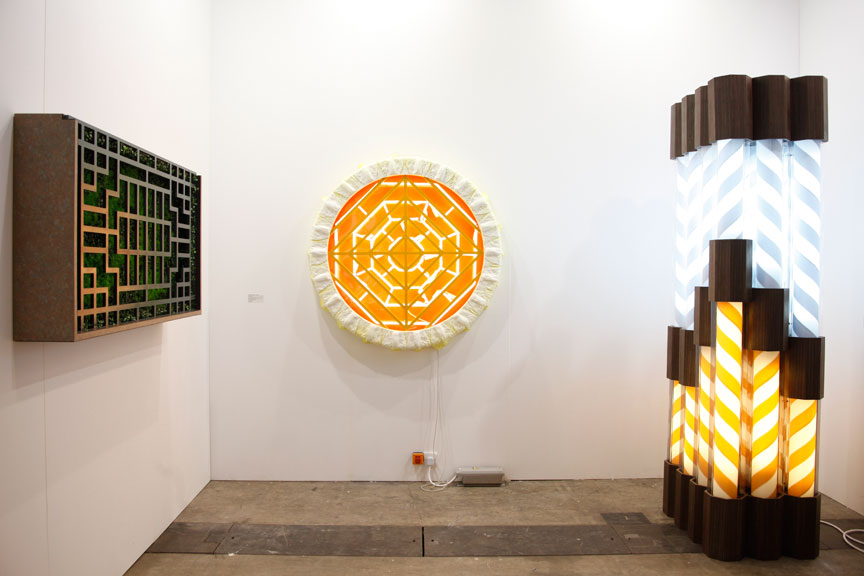
Fresh from his success at the Sovereign Asian Art Prize, Adrian Wong made an impression with his candy-striped towers composed of spinning barbershop poles and multilayered metal lattice works at Chicago gallery Rhona Hoffman.
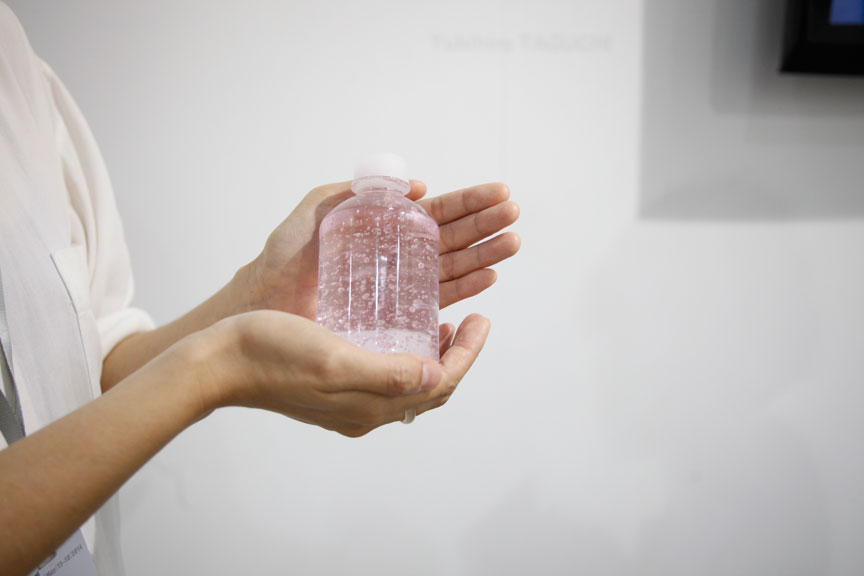
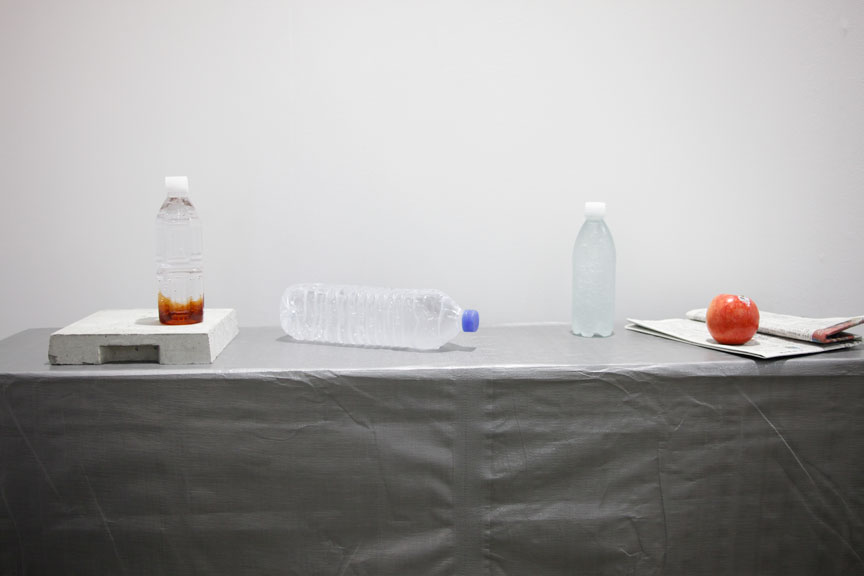
The Discoveries section, devoted to young galleries exhibiting the works of just one or two artists, offered engaging shows in a digestible manner. Appealing to visitors tactile desires, Mujin-To gallery in Tokyo allowed people to feel the weight the Ryohei Usui’s deceptive and beautiful glass casts of plastic bottles.
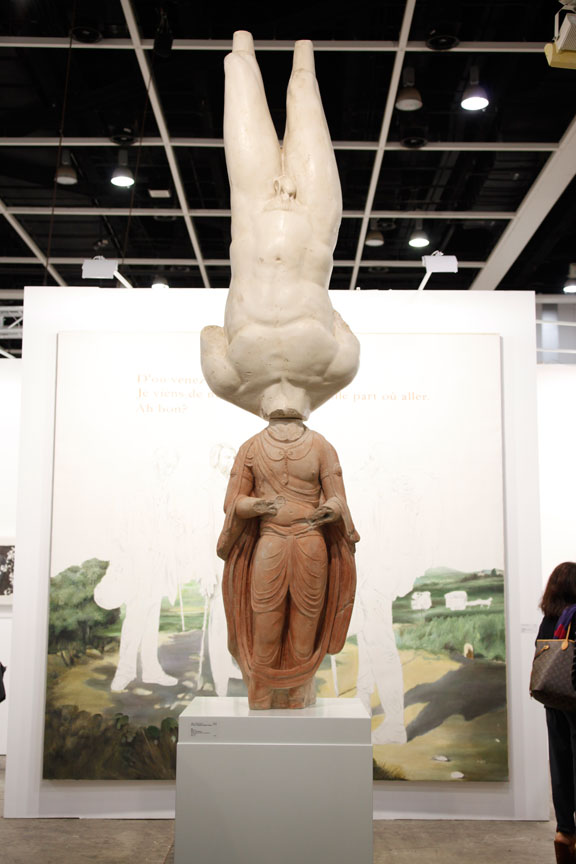
Eternity (2013), Xu Zhen’s majestic merging of two headless sculptures, blended Eastern and Western traditions of idolatry at ShangART Gallery.

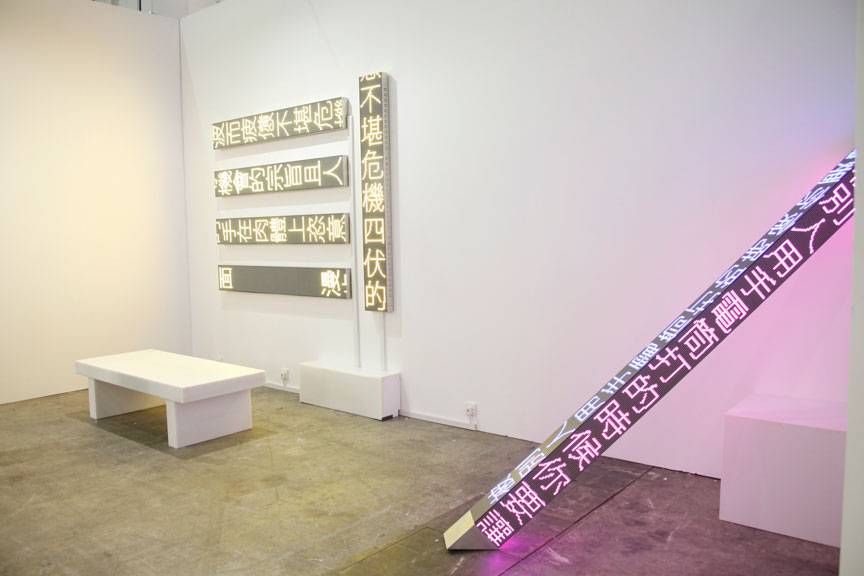
Zhang Ding’s sculptural work at Galerie Krinzinger featured metallic lettering applied onto tall concrete barriers, challenging the prescribed spatial layout of the fair while Jenny Holzer’s streaming LEDs created their own textual rhythm at Pearl Lam Galleries.
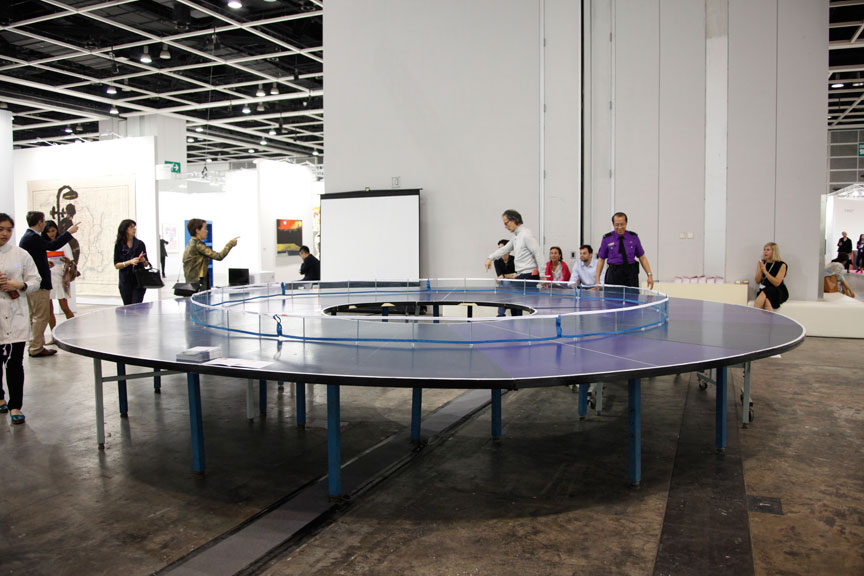
Lee Wen’s circular Ping Pong Go-Round (2013) made an earnest attempt to transform the Encounters section into a sporting arena (paddles and balls provided) but the restricted gaming times slightly diminished the effect.
